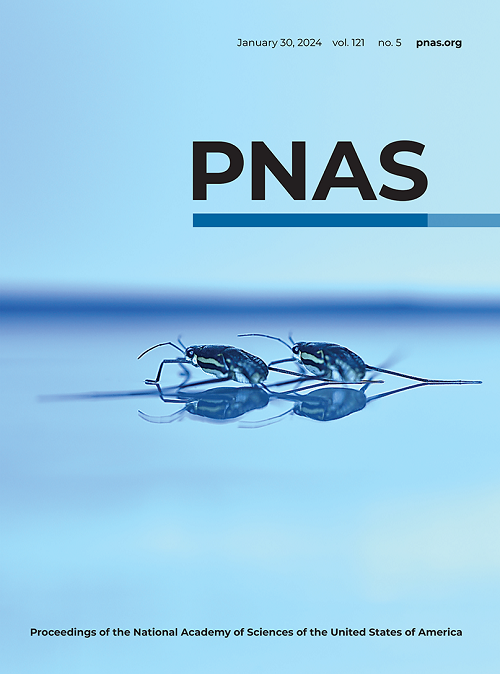Lipid residue analysis reveals divergent culinary practices in Japan and Korea at the dawn of intensive agriculture
IF 9.1
1区 综合性期刊
Q1 MULTIDISCIPLINARY SCIENCES
Proceedings of the National Academy of Sciences of the United States of America
Pub Date : 2025-07-21
DOI:10.1073/pnas.2504414122
引用次数: 0
Abstract
The dispersal of millet and rice agriculture from Korea to Japan from around 3,000 y ago has been well documented through radiocarbon analysis of botanical remains and surveying seed impressions on pottery. Much less is known about the extent to which these novel crops were consumed and incorporated into everyday culinary practices. In Japan, agriculturalists moving from Korea would have encountered large, sedentary Final Jomon populations who had well-established hunting, foraging, and cultivation strategies for exploiting indigenous fauna and flora. The degree to which these encounters hindered or enhanced the emergence of agriculture is a key question. To investigate potential changes in food exploitation, we analyzed the contents of pottery through lipid residue analysis of 260 vessels from Bronze Age (Mumun) Korea and contemporary Jomon and Yayoi pottery from Northern Kyushu. A lipid biomarker for broomcorn millet was only found in samples from Korea, suggesting that this crop was not routinely prepared in early agricultural pottery from Japan, despite some botanical evidence for its cultivation. Instead, aquatic products continued to be used in early agricultural pottery, pointing to continuity from the Jomon period despite the arrival of new “continental” ceramic forms. Rice remains difficult to identify conclusively, but by modeling carbon isotope values, we were able to determine the maximum extent that rice may have contributed. Overall, we show that there was a change in culinary practices as agriculture dispersed from Korea to Japan, most likely influenced by different long-standing traditions of preparing and cooking foods in each locality.脂质残留物分析揭示了日本和韩国在集约化农业初期的不同烹饪做法
通过对植物遗迹的放射性碳分析和对陶器上的种子印痕的调查,已经很好地记录了大约3000年前小米和水稻农业从朝鲜传播到日本的过程。人们对这些新作物在多大程度上被消费并纳入日常烹饪实践知之甚少。在日本,从朝鲜迁移过来的农学家可能会遇到大量定居的绳纹人,他们有完善的狩猎、觅食和种植策略,可以利用当地的动植物。这些遭遇在多大程度上阻碍或促进了农业的出现是一个关键问题。为了研究食物开发的潜在变化,我们通过对韩国青铜器时代(木门)的260个容器和来自北九州的当代绳纹和弥生陶器的脂质残留物进行分析,分析了陶器的含量。研究人员只在韩国的样品中发现了黍粒的脂质生物标志物,这表明尽管有一些植物证据表明黍粒的种植,但这种作物并没有在日本早期的农业陶器中被常规制备。相反,尽管出现了新的“大陆”陶瓷形式,但早期农用陶器中仍继续使用水产品,这表明绳纹时期的延续。大米仍然难以确定,但通过模拟碳同位素值,我们能够确定大米可能贡献的最大程度。总的来说,我们表明,随着农业从韩国扩散到日本,烹饪实践发生了变化,最有可能的是受到每个地方不同的长期准备和烹饪食物传统的影响。
本文章由计算机程序翻译,如有差异,请以英文原文为准。
求助全文
约1分钟内获得全文
求助全文
来源期刊
CiteScore
19.00
自引率
0.90%
发文量
3575
审稿时长
2.5 months
期刊介绍:
The Proceedings of the National Academy of Sciences (PNAS), a peer-reviewed journal of the National Academy of Sciences (NAS), serves as an authoritative source for high-impact, original research across the biological, physical, and social sciences. With a global scope, the journal welcomes submissions from researchers worldwide, making it an inclusive platform for advancing scientific knowledge.

 求助内容:
求助内容: 应助结果提醒方式:
应助结果提醒方式:


